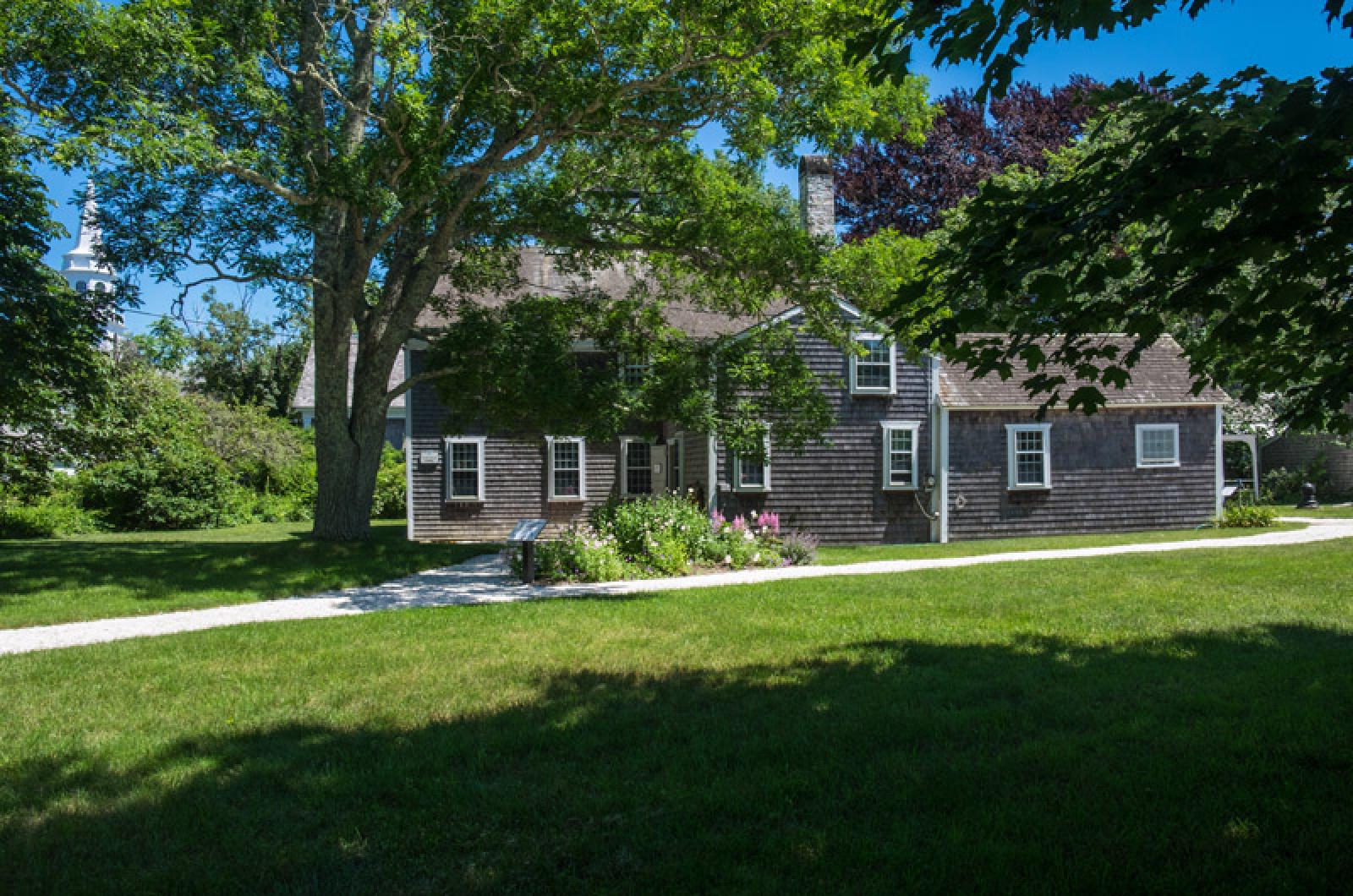The Martha’s Vineyard Museum has begun plans to create a public garden on property it owns around the Thomas Cooke House in downtown Edgartown.
The concept marks a notable shift in the future vision for the museum’s Edgartown campus as it pursues a major $28 million project to relocate to Vineyard Haven.
The museum broke ground at the old marine hospital site early this summer. And as the capital campaign continues in earnest for the Vineyard Haven project, board members have been discussing plans for the small Edgartown campus spanning Cooke and School streets where the museum has been housed since its inception as the Dukes County Historical Society in 1922.
Original plans called for breaking the property into four lots, and selling three of them. The historic Cooke house and a sliver of land around it would stay under the museum’s ownership, while the Fresnel lens will be moved to Vineyard Haven.
But recently a new vision began to emerge for the Edgartown property that would include keeping more land to create a public garden in the heart of the village that is known for its handsome vernacular New England architecture.
Museum executive director Phil Wallis said the idea sprang from a conversation in his office with Tom Dunlop, a historian and writer who has extensively researched the history of the Cooke house, built in 1740.
“The Cooke House is the backbone of Edgartown, the first and central artery of four things on Martha’s Vineyard: Commerce, religion, homesteading and law,” Mr. Wallis recounted.
Mr. Wallis came to the museum from the Pennsylvania Audubon last year, where his work focused on land conservation.
As he began to better learn about the importance of the Cooke house, he said the plan for the Edgartown campus seemed insufficient. The “backbone of Edgartown” would be cramped among private homes with little space around it. “I thought, wait a minute, can we keep that lot and the two next to it and turn them into a public park?”
The answer from the museum’s board and staff was an enthusiastic yes.
Mr. Wallis and recently-retired development director Daniel Waters sketched a new plan for keeping about two thirds of an acre for the Cooke House Gardens. Existing structures (except the Cooke house) would be removed. The space would include a garden with paths, benches, flowerbeds, native plants and trees. “The museum cares deeply about its Edgartown roots and community, and sees this moment as an opportunity to preserve Island history and a sense of place,” a museum statement says.
“I’m very conscious of moments in history that are forks in the road,” said Mr. Waters. “This is one of them.”
The immediate challenge is how to pay for the plan as the museum continues to raise funds for the marine hospital project.
Mr. Wallis had the Edgartown campus surveyed and came up with a proposal. “If we can raise the same amount of money that would come in from the sale of the lots, we can afford to keep them,” he said. The amount needed is estimated at $4.8 million. The idea is to preserve almost 28,000 square feet or about two-thirds of an acre. The remainder of the property, an area that now houses administrative offices for the museum, would still be sold for private residential use.
Half the money raised through fundraising would go to creating the Cooke House Gardens and a fund to support programming, while the other half would go toward the main museum project in Vineyard Haven.
Mr. Wallis said he understands it is a bold move to seek even more financial support while $8 million remains to be raised for the marine hospital project. But he is optimistic. “I think this such a good thing for the community,” he said. “This is us giving back to Edgartown instead of taking something away.”
He flipped through notes as he described the vision for a garden of traditional plants organized by century — from the 1700s, 1800s, 1900s and 2000s —“all the years that this house has been here.” He pulled out maps and a prospective sketch by the Edgartown artist Dana Gaines. He spoke about a multi-sensory park where visitors with disabilities would be welcome to explore. He pointed to a corner where tumbling water fountain could be built, “to attract the hundreds of species of warblers that visit the Island.”
He continued: “We have this wonderful open space around us called the Atlantic Ocean. But people like you and me can’t just hang out there whenever we want. It’s a little counter intuitive to raise money to protect land and not to raise money by selling it. But we all need green space.”
The museum has set a deadline of Oct. 1 to raise the funds. “I think the Island is going to say yes to this,” Mr. Wallis said.






Comments
Comment policy »